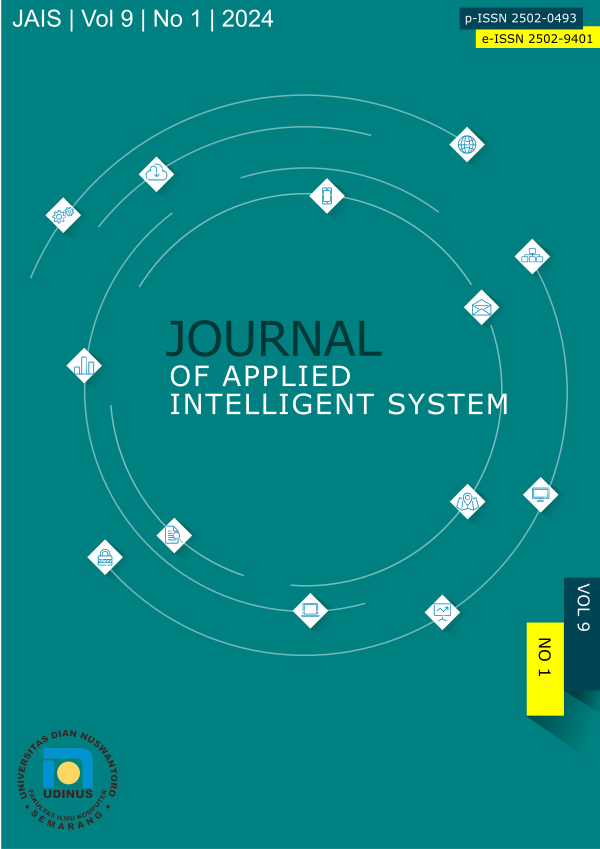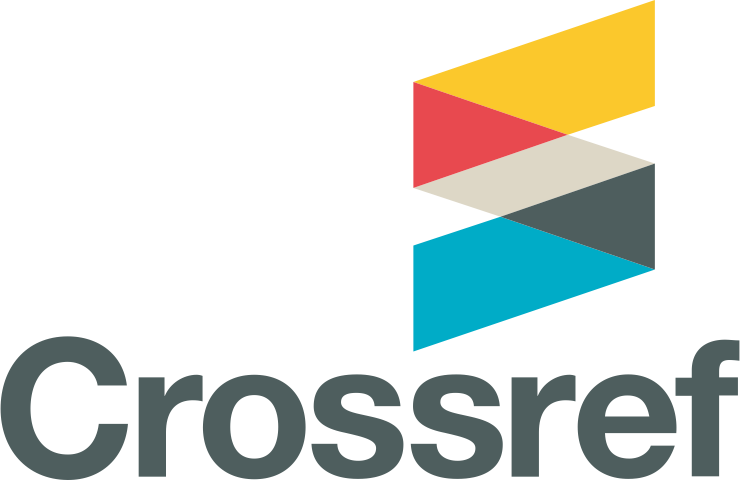Customer Segmentation Using K-Means Clustering with RFM Method (Case Study : PT. Dewangga Travindo Semarang)
DOI:
https://doi.org/10.62411/jais.v9i1.10440Abstract
PT. Dewangga Travindo is a company that operates in the field of travel services which includes tours, travel, and Hajj and Umrah pilgrimages which is based in the city of Semarang and has received permission from the Ministry of Religion No. D/606 of 2013. Every year there is always an increase in sales of services. Hajj and Umrah. The higher transaction activity every day results in a large buildup of data in the database which will only become data waste. The ability to process data is increasingly sophisticated using data mining, which is an activity of looking for relationships between items to obtain patterns as information to assist in decision making. However, considering the large number of competitors offering the same services, it is necessary to increase competitiveness to overcome market segmentation at PT Dewangga Travindo. For this reason, this research was carried out which aims to overcome customer segmentation using the Clustering method with the K-Means algorithm which produces a visual cluster model with RStudio tools using RFM attributes applied to carry out segmentation. The data used in this research is data on Hajj and Umrah pilgrims in the 2018-2020 period.References
karir.com, “PT Dewangga Tour & Travel.” https://www.karir.com/companies/25471.
F. Hadi, M. Mustakim, D. O. Rahmadia, F. H. Nugraha, N. P. Bulan, and S. Monalisa, “Penerapan K-Means Clustering Berdasarkan RFM Mofek Sebagai Pemetaan dan Pendukung Strategi Pengelolaan Pelanggan (Studi Kasus: PT. Herbal Penawar Alwahidah Indonesia Pekanbaru),” J. Sains dan Teknol. Ind., vol. 15, no. 1, pp. 69–76, 2017.
F. T. Informasi, “Segmentasi Pelanggan Menggunakan Clustering K-Means Dan Model Rfm ( Studi Kasus : Pt . Bina Adidaya Surabaya) Customer Segmentation Using K- Means Clustering and Rfm Model ( Case Study : Pt . Bina Adidaya Surabaya Segmentasi Pelanggan Menggunakan Clusteri,” 2017.
Aviliani, U. Sumarwan, I. Sugema, and A. Saefuddin, “Segmentasi nasabah tabungan mikro berdasarkan recency, frequency, dan monetary : kasus bank bri,” Financ. Bank. J., vol. 13, no. 1, pp. 95–109, 2011.
R. Kohavi and R. Parekh, “Visualizing RFM segmentation,” SIAM Proc. Ser., no. April, pp. 391–399, 2004, doi: 10.1137/1.9781611972740.36.
M. I. Istiana, “Segmentasi Pelanggan menggunakan Algoritma K-Means Sebagai Dasar Strategi Pemasaran pada LAROIBA Seluler,” vol. 1, pp. 3–4, 2013.
D. Zheng, “Application of silence customer segmentation in securities industry based on fuzzy cluster algorithm,” J. Inf. Comput. Sci., vol. 10, no. 13, pp. 4337–4347, 2013, doi: 10.12733/jics20102432.
G. F. Wulandari, “Segmentasi Pelanggan Menggunakan Algoritma K-Means Untuk Customer Relationship Management (CRM) Pada Hijab Miulan,” Ind. Mark. Manag., vol. I, no. segmentasi pelanggan, p. 7, 2014.
Y. Nugraheni, “Data Mining Using Fuzzy Theory for Customer Relationship Management,” Lontar Komput., vol. 4, no. 1, pp. 188–200, 2013.
Sudriyanto, “Clustering Loyalitas Pelanggan Dengan Metode RFM (Recenty, Frequency, Monetary) dan Fuzzy C-Means,” Pros. SNATIF Ke-4, pp. 815–822, 2017.
A. Rafika, Segmentasi Pelanggan Menggunakan Som, Algoritma K-Means Dan Analisis Lrfm Untuk Penyusunan Rekomendasi Strategi Pemasaran Pada Klinik Kecantikan Nanisa, Sidoarjo. 2015.
M. Iqbal, “Klasterisasi Data Jamaah Umroh Pada Auliya Tour & Travel Menggunakan Metode K-Means Clustering,” JURTEKSI (Jurnal Teknol. dan Sist. Informasi), vol. 5, no. 2, pp. 97–104, 2019.
F. Buttle, Customer Relationship Management-Concepts and Technologies (Second Edition), Second., vol. 53, no. 9. Hungary: Elsevier, 2013.
R. Kalakota and M. Robinson, E-Business 2.0 - Roadmap for Success Second Edition. Canada: Wiley Publishing, Inc, 2000.
D. P. Hidayatullah, R. I. Rokhmawati, and A. R. Perdanakusuma, “Analisis Pemetaan Pelanggan Potensial Menggunakan Algoritma K-Means dan LRFM Model Untuk Mendukung Strategi Pengelolaan Pelanggan ( Studi Pada Maninjau Center Kota Malang),” J. Pengemb. Teknol. Inf. dan Ilmu Komput., vol. 2, no. 8, pp. 2406–2415, 2018.
M. J. A. Berry dan G. S. Linoff, Mastering Data Mining: The Art and Science of Customer Relationship Management. Canada: John Wiley & Sons, Inc, 2000.
Y. Mardi, “Data Mining : Klasifikasi Menggunakan Algoritma C4.5,” J. Edik Inform., vol. 2, no. 2, pp. 213–219, 2017.
R. D. Syah, “Metode Decision Tree Untuk Klasifikasi Hasil Seleksi Kompetensi Dasar Pada Cpns 2019 Di Arsip Nasional Republik Indonesia,” J. Ilm. Inform. Komput., vol. 25, no. 2, pp. 107–114, 2020, doi: 10.35760/ik.2020.v25i2.2750.
D. D. Efraim Turban, Ramesh Sharda, Decision Support And Business Intelligence Systems (9th Edition). New Jersey: Pearson, 2011.
S. Agarwal, Data mining: Data mining concepts and techniques. 2014.
Kenneth Jensen, “Cross-Industry Standard Process for Data Mining (CRISP-DM).”
C. Fraley and A. E. Raftery, “How many clusters? Which clustering method? Answers via model-based cluster analysis,” Comput. J., vol. 41, no. 8, pp. 586–588, 1998, doi: 10.1093/comjnl/41.8.578.
N. Wakhidah, “Clustering Menggunakan K-Means Algorithm,” J. Transform., vol. 8, no. 1, p. 33, 2010, doi: 10.26623/transformatika.v8i1.45.
E. Muningsih and A. B. S. I. Yogyakarta, “Optimasi jumlah cluster k-means dengan metode elbow untuk pemetaan pelanggan,” Pros. Semin. Nas. ELINVO, no. September, pp. 105–114, 2017.
B. Purnima and K. Arvind, “EBK-Means: A Clustering Technique based on Elbow Method and K-Means in WSN,” Int. J. Comput. Appl., vol. 105, no. 9, pp. 17–24, 2014, [Online]. Available: https://www.ijcaonline.org/archives/volume105/number9/18405- 9674.
T. M. Kodinariya and P. R. Makwana, “Review on determining number of Cluster in K- Means Clustering,” Int. J. Adv. Res. Comput. Sci. Manag. Stud., vol. 1, no. 6, pp. 2321– 7782, 2013.
S. G. K. Patro and K. K. sahu, “Normalization: A Preprocessing Stage,” Iarjset, pp. 20– 22, 2015, doi: 10.17148/iarjset.2015.2305.
H. Junaedi, H. Budianto, I. Maryati, and Y. Melani, “Data Transformation pada Data Mining,” Pros. Konf. Nas. Inov. dalam Desain dan Teknol., vol. 7, pp. 93–99, 2011.
Y. C. Sitanggang, C. Dewi, and R. C. Wihandika, “Pemilihan Rute Optimal Penjemputan Penumpang Travel Menggunakan Ant Colony Optimization Pada Multiple Travelling Salesman Problem (M-TSP),” J. Pengemb. Teknol. Inf. dan Ilmu Komput. Univ. Brawijaya, vol. 2, no. 9, pp. 3138–3145, 2018.
E. Martiana, Data Preprocessing : Data Transformation. Surabaya: EEPIS-ITS, 2013.
A. Aigustin, “Identifikasi Tanda Tangan Menggunakan Manhattan Distance dan Sum Square Error dengan Ekstraksi Ciri Dimensi Fraktal,” 2014.
A. R. H. Sisca Indah Pratiwi, Tatik Widiharih, “ANALISIS KLASTER METODE WARD DAN AVERAGE LINKAGE DENGAN VALIDASI DUNN INDEX DAN KOEFISIEN KORELASI COPHENETIC (Studi Kasus: Kecelakaan Lalu Lintas Berdasarkan Jenis Kendaraan Tiap Kabupaten/Kota di Jawa Tengah Tahun 2018),” J. gaussian, vol. 8, pp. 486–495, 2019, [Online]. Available: http://ejournal3.undip.ac.id/index.php/gaussian.
A. D. Savitri, F. A. Bachtiar, and N. Y. Setiawan, “Segmentasi Pelanggan Menggunakan Metode K-Means Clustering Berdasarkan Model RFM Pada Klinik Kecantikan (Studi Kasus : Belle Crown Malang),” J. Pengemb. Teknol. Inf. dan Ilmu Komput. Univ. Brawijaya, vol. 2, no. 9, pp. 2957–2966, 2018.
Arthur M. Hughes, Strategic Database Marketing. Chicago: Probus Publishing, 1994.
Z. Li, “Research on customer segmentation in retailing based on clustering model,” 2011 Int. Conf. Comput. Sci. Serv. Syst. CSSS 2011 - Proc., pp. 316–318, 2005, doi: 10.1109/CSSS.2011.5974496.
C. H. Cheng and Y. S. Chen, “Classifying the segmentation of customer value via RFM model and RS theory,” Expert Syst. Appl., vol. 36, no. 3 PART 1, pp. 4176–4184, 2009, doi: 10.1016/j.eswa.2008.04.003.
B. W. Taylor, introduction to Management science, 11th ed., vol. 83, no. 3. United States of America: Prentice Hall, 2013.
Downloads
Published
Issue
Section
License
Copyright (c) 2024 Hida Sekar Winaryanti, Heru Pramono Hadi, Eko Hari Rachmawanto

This work is licensed under a Creative Commons Attribution-NonCommercial 4.0 International License.
- Authors retain copyright and grant the journal right of first publication with the work simultaneously licensed under a Creative Commons Attribution License that allows others to share the work with an acknowledgment of the work's authorship and initial publication in this journal.
- Authors are able to enter into separate, additional contractual arrangements for the non-exclusive distribution of the journal's published version of the work (e.g., post it to an institutional repository or publish it in a book), with an acknowledgment of its initial publication in this journal.
- Authors are permitted and encouraged to post their work online (e.g., in institutional repositories or on their website) prior to and during the submission process, as it can lead to productive exchanges, as well as earlier and greater citation of published work (See The Effect of Open Access).









